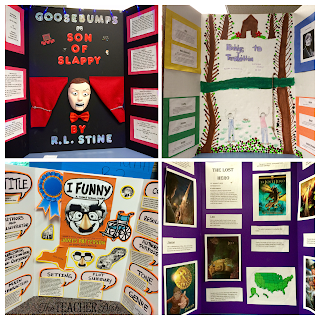First I divided my students into groups based on reading levels and book interests. Each group chose the book that they would like to read as a group. My book sets are leveled based on Fountas and Pinnell and sorted into plastic tubs, so it's easy for kids to peruse the titles and make their selection. Below are some examples of some of the books they chose for their Book Club groups.
As you can see, students chose a wide variety of books! I loved going to each Book Club and hearing about their books!
On the back of their planning sheet, I added a Book Club Participate Grade page. Every student began with 100 participation points. If a student is off task during Book Club time, then I made an "X" in one of the boxes to indicate that a point had been deducted.
At the beginning of each class period, students met with their book club groups to decide what needed to be accomplished for the day and review what happened in their books previously. This usually took about 5 minutes.
As students read, I encouraged them to use post-it notes to make reading connections and make notes of things they wanted to discuss with their Book Clubs. Here's an anchor chart they used as a reference. I kept a pile of post-it notes in the middle of each table.
After reading, students met in their book club groups to discuss what was read. I put a few discussion points on the Smartboard.
I also put up a few anchor charts students could refer to as they met with their groups.
 |
| This chart was inspired by the Lucy Calkins Reading Units featuring book clubs. |
While students were in their Book Club groups, I visited with each table to listen in on their conversations. I would sometimes ask the members, "What's going on today with _______?"
 |
| I found this chart idea on Pinterest. |
For this assignment, students picked an interesting vocabulary word. I put dictionaries in the middle of each table so students could use them to look up the definitions of these words.
So, that's how we did Book Clubs in my 5th grade class this year! I kept it simple and easy and it was very manageable! How do you do Book Clubs in your classroom? Please share your great ideas in the comments section! We'd love to hear from you!
































